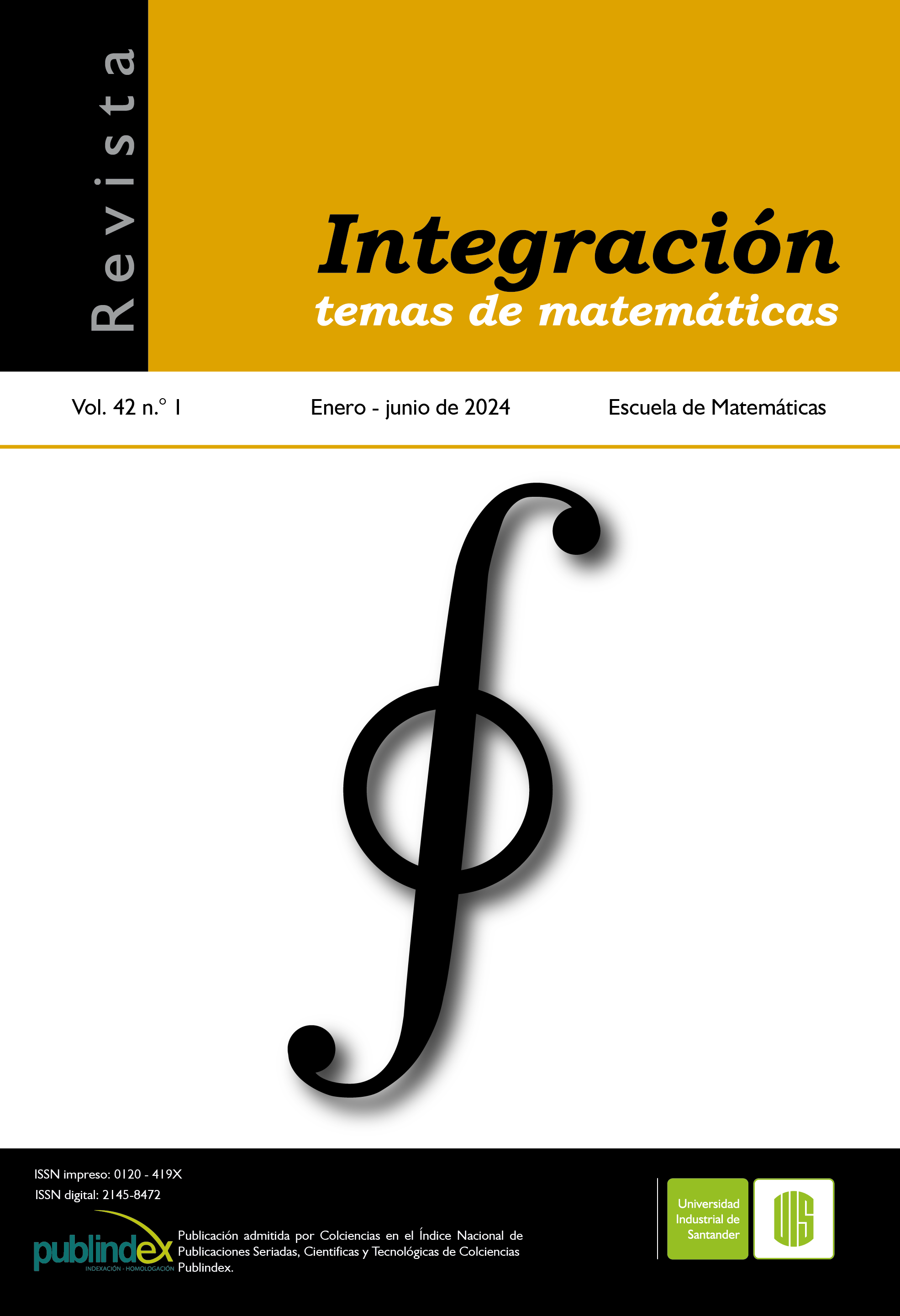Research and Innovation Articles
Published 2024-05-16
Keywords
- Fibonacci and Lucas sequences,
- Linear form in logarithms,
- reduction method
How to Cite
Ibarra, S., & Rivera Martínez, L. M. (2024). Fibonacci and Lucas numbers of the form -2^a-3^b-5^c+7^d. Revista Integración, Temas De matemáticas, 42(1), 43–50. https://doi.org/10.18273/revint.v42n1-2024004
Copyright (c) 2024 Revista Integración, temas de matemáticas

This work is licensed under a Creative Commons Attribution 4.0 International License.
Abstract
In this note we find all Fibonacci and Lucas numbers of the form -2^a-3^b-5^c+7^d where a, b, c, d are non-negative integers, with 0 ≤ max{a, b, c} ≤ d. This result gives an answer to a question posed by Qu, Zeng and Cao.
Downloads
Download data is not yet available.
References
- Baker A. and Davenport H., “The equations 3X^2 −2 = Y^2 and 8X^2 −7=Z^2”, Q. J. Math. Oxf., 20 (1969), no. 2, 129–137.
- Bravo J. J., Gómez C.A. and Luca F. “Powers of two as sums of two k-Fibonacci numbers”, Miskolc Math. Notes, 17 (2016), no. 1, 85–100.
- Bugeaud Y., Mignotte M. and Siksek S., “Classical and modular approaches to exponential
- Diophantine equations. I. Fibonacci and Lucas perfect powers”, Ann. Math., 163 (2006), 969–1018.
- Dujella A. and Petho A., “A generalization of a theorem of Baker and Davenport”, Quart. J. Math. Oxford, 49 (1998), no. 3, 291–306.
- García-Lomelí A. C. and Hernández S., “Powers of two as sums of two Padovan numbers”, Integers 18 (2018), Paper No. A84, 11 pp. .
- Hernández S. H., “The Fibonacci numbers of the form 2^a ± 2^b + 1”, Fibonacci Quart., 56 (2018), no. 4, 354–359.
- Hernández S. H., Luca F. and Rivera L. M., “On Pillai’s problem with the Fibonacci and Pell sequences”, Bol. Soc. Mat. Mex., 25 (2019), no. 3, 495–507.
- Qu Y., Zeng J. and Cao Y., “Fibonacci and Lucas Numbers of the Form 2^a + 3^b + 5^c + 7^d”, Symmetry, 10 (2018), no. 509, 7 pp. [9] Luca F., “Fibonacci numbers of the form k^2 + k + 2”, In Proceedings of the Applications of Fibonacci Numbers, Rochester, NY, USA, 22–26 June 1998; Kluwer Academic Publishers: Dordrecht, The Netherlands, Vol. 8, pp. 241–249 (1999).
- Luca F. and Szalay L., “Fibonacci numbers of the form pa ± pb + 1”, Fibonacci Quart., 45 (2007), 98–103.
- Luo M., “On triangular Fibonacci numbers”, Fibonacci Quart., 27 (1989), 98–108.
- Luo M. , “On triangular Lucas numbers”, In Applications of Fibonacci Numbers; Springer: Dordrecht, The Netherlands, 231–240 (1991).
- Marques D. and Togbé A., “Fibonacci and Lucas numbers of the form 2^a + 3^b + 5^c”, Proc. Japan Acad. Ser. A Math. Sci., 89 (2013) no. 3, 45–50.
- Matveev E. M., “An explicit lower bound for a homogeneous rational linear form in the logarithms of algebraic numbers II”, Izv. Math., 64 (2000), no. 6, 1217–1269.
- Sánchez S. G. and Luca F., “Linear combinations of factorials and S-units in a binary recurrence sequence”, Ann. Math. Québec, 38 (2014), 169–188.

